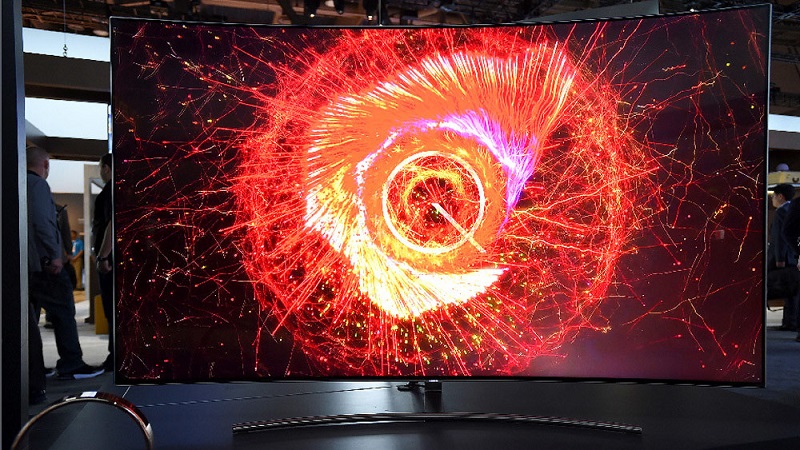One of the technologies that have most sounded in this CES 2017 has been the QLED presented by Samsung in its new high-end televisions, which come to replace SUHD but with the same goal: to deal with OLED televisions. In fact, right now Samsung is the only major manufacturer that has decided not to bet on OLED, unlike LG, Sony or Panasonic, who already have several options in their catalogs.
Next we will analyze the advantages and disadvantages of the QLED against the OLED so that we all have a little more clear why option decanter us in case we are thinking about buying a new television.

The basic difference between QLED and OLED
The cells of OLED panels (organic light-emitting diode) light themselves, something that does not happen in LCD panels, which mounted conventional LED TVs. Where are the QLED TVs? In the group of LCD panels, they are the ones that need an external light source to generate the image that we just see. Usually this lighting is located on the back or side of the panel.
In other words, and although the names may make us think otherwise, QLED ( Quantum Dot Light Emitting Diode ) panels need an external light source and are an evolution of LCD and Quantum Dot technology or nanocrystals. We can think of them as a LED-powered panels. And what differentiates them from the ‘normal’ LED panels? In that the activation of the pixels in the QLED panels can be done individually, allowing them to play much better with the contrast and resemble the OLED in its main advantage (as we will see, pure black).
LG, by the way, has introduced the Nano Cell technology, which has the same goal as Samsung’s QLED: to improve the image quality of traditional LED panels.
You may also like to read another article on iMindSoft: Leeco going to win big US: Smart TVs, new mobile, bike with Android and autonomous car
Clarifying this basic difference, let’s see the advantages and disadvantages that exist on the role between QLED and OLED …
Advantages of QLED versus OLED
- Higher brightness levels: As we said, QLED is an evolution of nanocrystal technology, which already allowed more brightness than OLEDs. Samsung’s new QLEDs promise between 1500 and 2000 nits, a brightness variation well above the 800 nits cap that OLEDs offer today. This extra brightness of the QLED will, theoretically, make better use of the HDR mode.
- More color volume and less saturation: Samsung ensures that its new QLEDs are able to reproduce 100% of the color volume (i.e. the full spectrum, sRGB, DCI-P3, etc.), which will allow us to appreciate a greater variety of colors. As the light entering each pixel can be controlled individually, saturation can also be better controlled.
- Better viewing angles: The QLED’s flexible feedback system would allow us to enjoy television from different angles of vision.
Disadvantages of QLED vs. OLED
- Pure black is still unattainable for the QLED: Here the OLED has no rival for now for a simple reason: since it does not need an external source of illumination, it is able to get pure black. The QLED, although it has an improved system, still needs external light to work, making it much more difficult for them to; reach a pure black like OLED.
- Design: Since OLED panels do not require exterior lighting, they can always have a thinner design than the QLED, which will need to save space behind or on the side for that light source.
Anyway, as we said, all these pros and cons are on paper. It is necessary to test this new QLED technology well and see how it behaves to judge in which cases it can compensate against the OLED. Right now, in theory, QLED is a better alternative to almost any conventional LED panel (although there are other manufacturers, like Sony with its Z series, that are not far behind in features and technology) and more economical than OLED televisions.